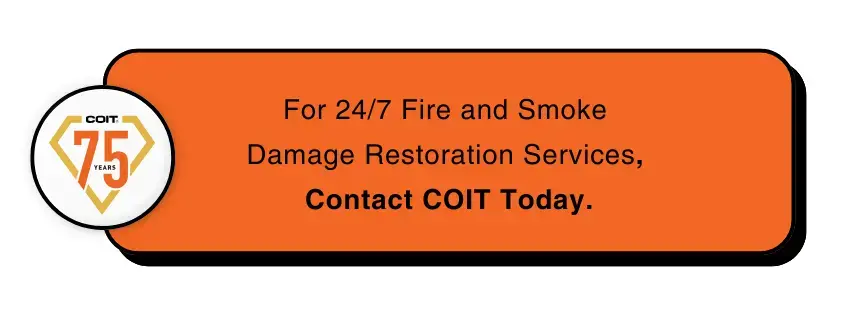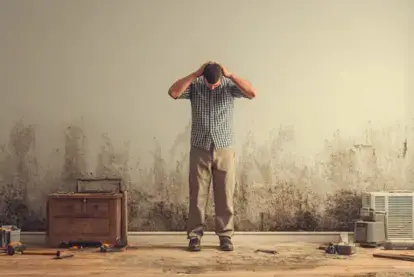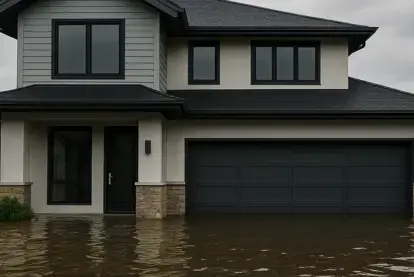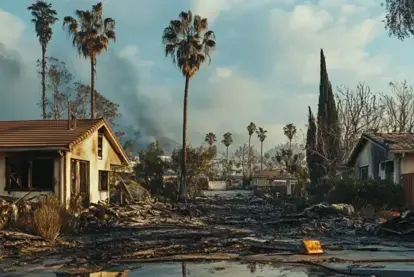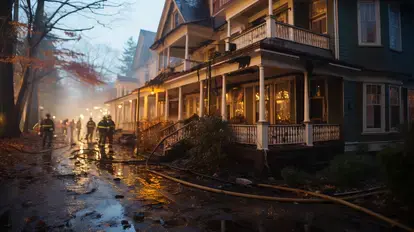
Fire Restoration Checklist: What to Do After a Fire
Experiencing a fire can be devastating, but knowing the steps to take afterwards can make the recovery process smoother. Here’s a checklist you can follow after a fire:
1. Immediate Safety First:
- Wait until fire officials declare the property safe before entering.
- Do not switch on electricity, gas, or water until inspected.
- If structural damage is visible, stay out until professionals stabilize the area.
2. Document the Damage
- Take photos and videos of every affected area and item.
- Save receipts for hotel stays, meals, or temporary housing — these may be covered by insurance.
- Keep a log of all calls and correspondence with your insurer.
3. Contact Professionals:
- Call a fire restoration company right away — response time matters.
- Notify your insurance provider and confirm coverage details
4. Address Water Damage:
- Fires often result in water damage from firefighting efforts. Address water damage immediately to prevent mold growth.
5. Remove Smoke & Soot Safely:
- Leave soot removal to the pros — scrubbing it yourself can spread it further.
- Don’t wash painted walls, carpets, or upholstery until inspected.
6. Property Cleaning
- Clean all surfaces, including walls, ceilings, and floors.
- Specialized equipment may be needed to remove smoke odors.
7. Restore Personal Items:
- Ask which belongings can be cleaned (clothing, furniture, electronics).
- Soft goods often require ozone or thermal fogging treatments to remove odors.
8. Begin Structural Repairs:
- Professionals will remove burned sections and rebuild where needed.
- This may include drywall replacement, electrical rewiring, or flooring repairs.
9. Schedule Safety Inspections:
- Have professionals inspect electrical systems, gas lines, and appliances before use.
- Check smoke alarms and replace if necessary.
10. Final Review:
- Walk through your property to ensure all restoration tasks have been completed.
- Consult with restoration professionals about any lingering concerns.
What NOT to Do After a Fire
Many homeowners unintentionally make damage worse by trying to “clean up” immediately. To protect your health and your property value, avoid these actions:
- Don’t turn on ceiling fans or HVAC systems — this spreads soot.
- Don’t wash walls, carpet, or upholstery on your own.
- Don’t eat food or use medications exposed to smoke or heat.
- Don’t enter rooms with sagging ceilings or weakened floors.
- Don’t attempt to wipe electronics or appliances — soot residue can cause permanent shorts.
How Long Does Fire Restoration Take?
One of the most common questions we hear is: “How long will it take before I can move back in?” The answer depends on the scale of the damage.
- Minor Fire Damage: Restoration for small, contained fires can take a few days to a week. This includes smoke odor removal, cleaning, and minor repairs.
- Moderate Fire Damage: For fires that cause more extensive damage to a room or area, the restoration process might last several weeks. This involves more in-depth smoke and soot removal, water extraction, structural repairs, and possibly remodeling.
- Severe Fire Damage: In cases where a fire has affected a large portion of a property or caused significant structural damage, restoration can take several months. This includes major reconstruction, extensive cleaning, and addressing potential water and mold issues.
It's essential to consult with a professional fire restoration company for a precise timeline, as each situation is unique. Regardless of the duration, the primary goal is to ensure the property is safe, clean, and restored to its pre-fire condition.
